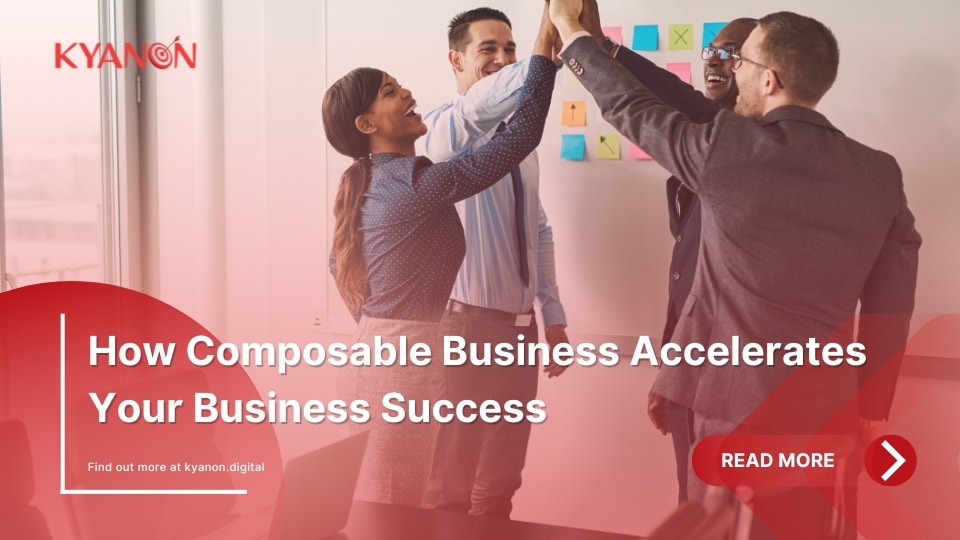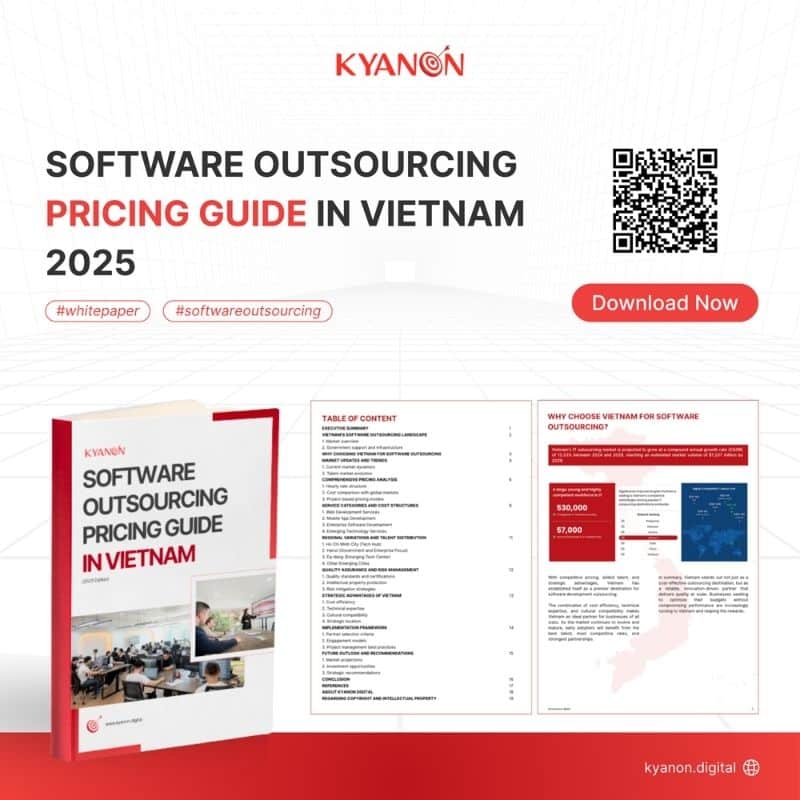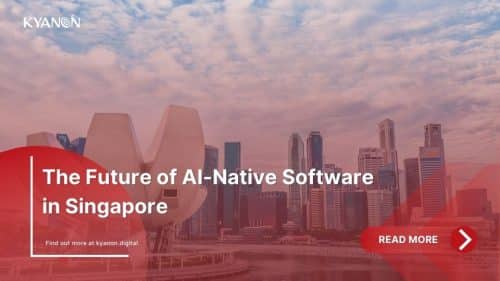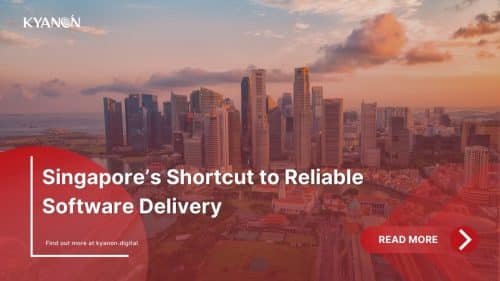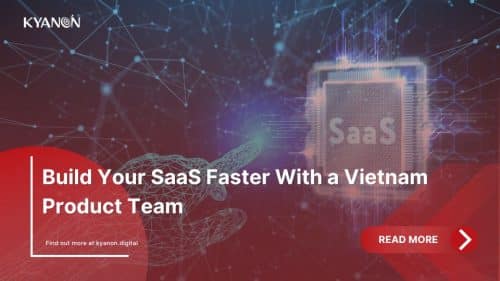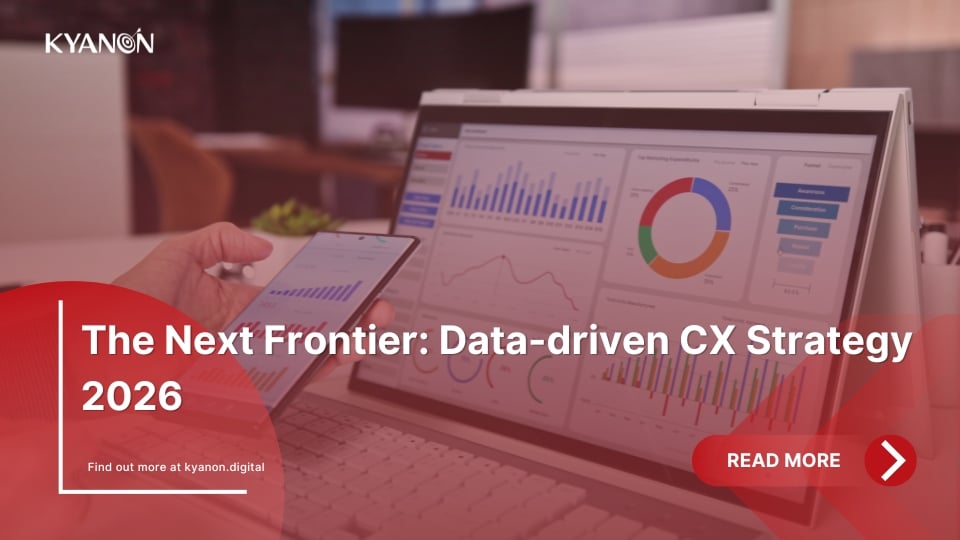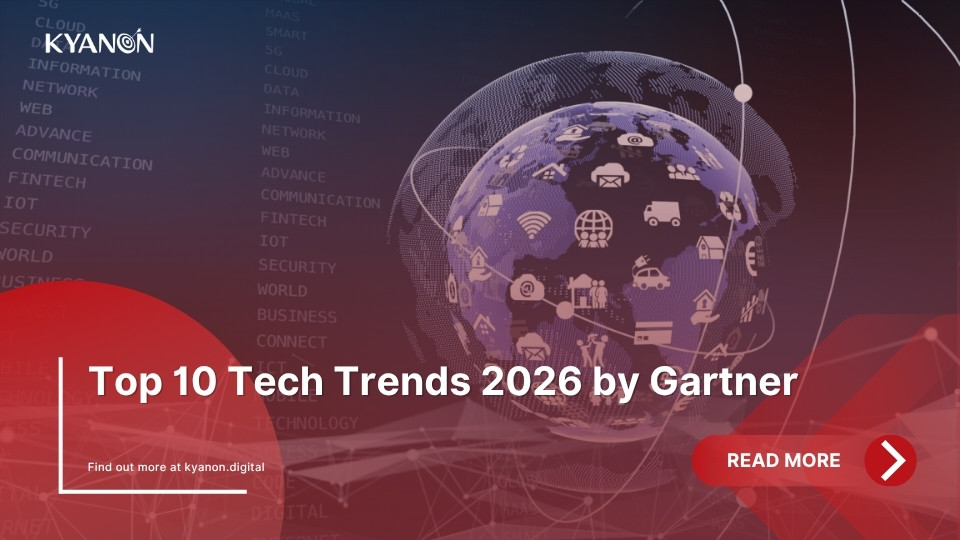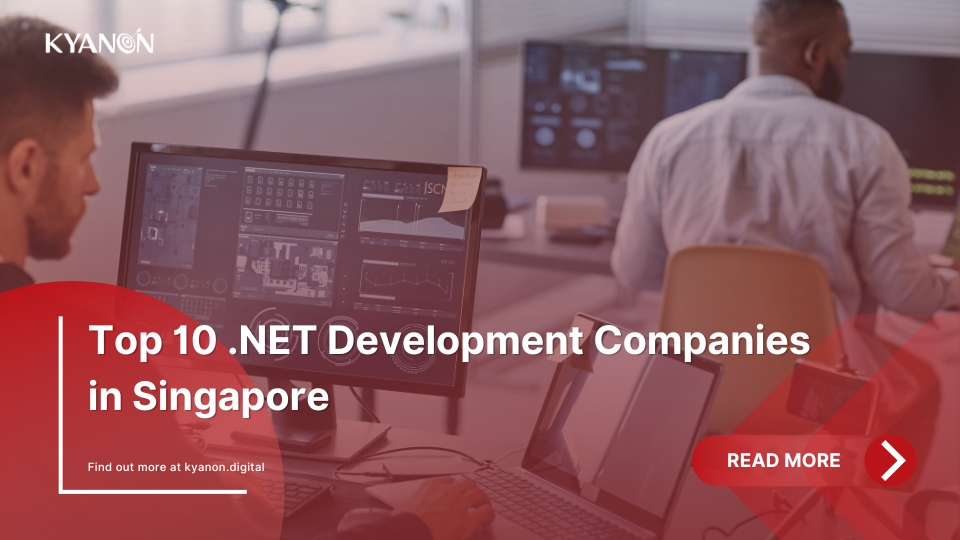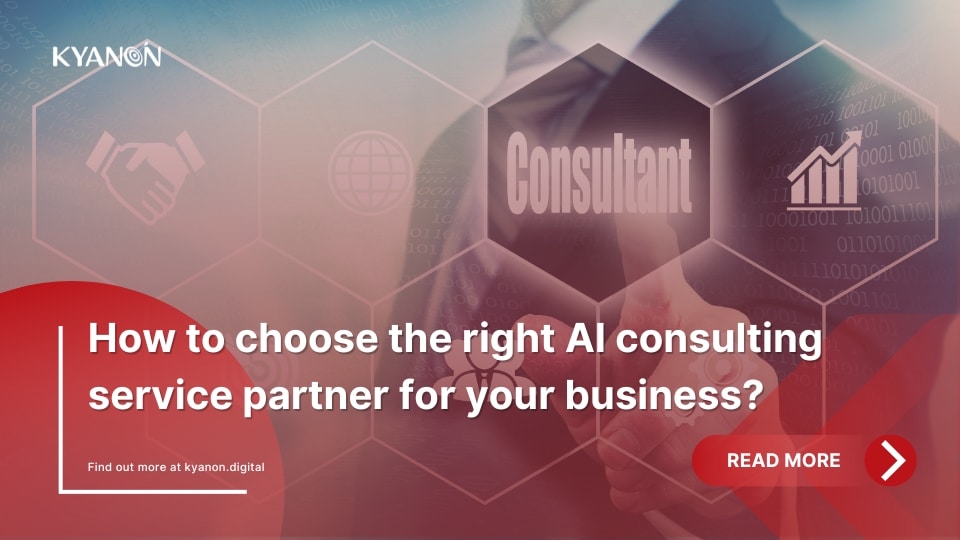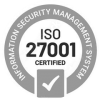In a fast-growing digital environment, businesses are suffering from unprecedented challenges. Traditional, rigid business models have difficulty adapting to the constantly changing market. And the Composable Business model emerges as a solution helping businesses reach sustainable development in the volatile business world.
1. What is a Composable Business? Why should companies use this model?
1.1. Definition
Composable Business, a modern business model, allows enterprises to build products, services, and processes from smaller, flexible, and reusable modules. These modules can be applications, cloud services, data, or even business processes.
There are three core principles that create this model:
- Composable thinking: Adjust the structure, process, products, or services rapidly to adapt to the market volatility and improve customer experience.
- Composable business architecture: Build an adaptive and sustainable organization that is ready to deal with the change.
- Composable technology: Focus on using composable and reusable technology to create flexible solutions.
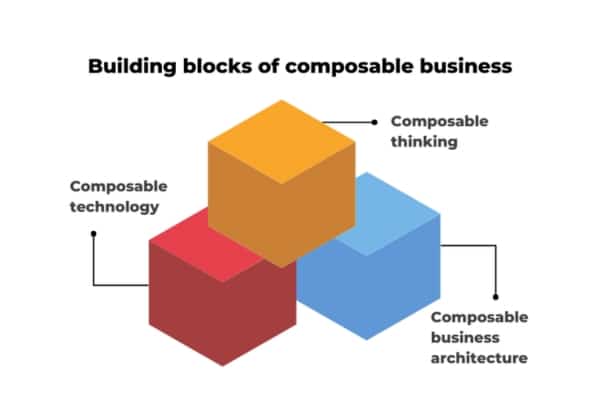
Three core principles of the Composable Business model. Source: Quixy
There is a huge difference between a Composable Business model and a traditional business model. In the traditional model, the business system is built rigidly, making it hard to accustom and expand. It usually takes a lot of time and cost for a business to update the whole system if they want to adapt to any modification of the market again.
On the contrary, the Composable Business model offers a more versatile approach. It allows businesses to easily replace, update, or add new components, services/products to their liking.
1.2. The role of the Composable Business in the current market scenario
In the digital age, customers’ demands change rapidly. To catch up with trends and business success, enterprises need to be able to adapt quickly. Composable Business provides a perfect solution for this issue.
By splitting the business model into small modules, enterprises can easily adjust and combine them to create new products and services to adapt to the diverse and volatile customers’ demands, therefore sustainably retaining the leading position in the market.
In particular, this model allows businesses to easily increase or decrease their scale of operation according to the market demand, as well as saving time and cost.
2. What are the components of a Composable Business?
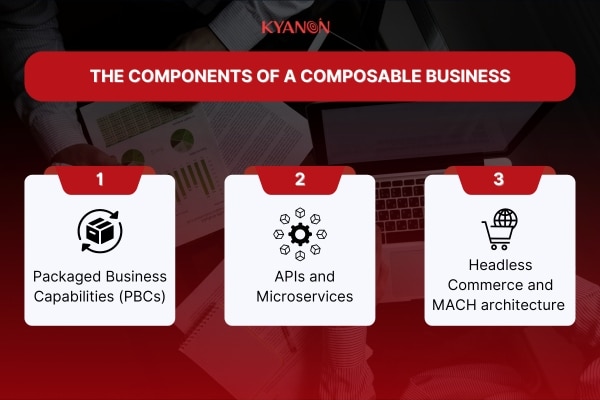
The components of a Composable Business
2.1. Packaged Business Capabilities
Packaged Business Capabilities (PBCs) are pre-designed software solutions that provide specific business functions and can be configured to adapt to individual enterprise requirements. For example, a customer regulation management (CRM) PBC can include features to manage customer data, follow interactions, and analyze customer behavior.
PBCs act as the “bricks” that build a business. While using pre-built PBCs, enterprises can quickly adapt new features and services.
2.2. APIs and Microservices
API (Application Programming Interface) is a set of rules and formats that permit different applications to communicate with each other.
Microservices is the software architecture in which the application is built from many small, independent, and individually deployable services.
These two modules act as “bridges” between each PBCs, allowing them to communicate and work together. Each part can be developed and modified separately, making the system easily expandable and adaptable to changes while operating smoothly and efficiently.
2.3. Headless Commerce and MACH architecture
Headless Commerce is the e-commerce architecture in which the front-end and back-end of the website are separated. This allows enterprises to be more versatile when choosing different tools and platforms.
The MACH architecture combines the design bases for e-commerce platforms, including Microservices, API-first, Cloud-native, and Headless.
When connected together, Headless Hommerce and MACH architecture create a flexible and open platform, making it easy for businesses to combine PBCs and third-party services. Therefore, enterprises can easily renovate and provide a seamless customer experience.
Transform your ideas into reality with our services. Get started today!
Our team will contact you within 24 hours.
3. What advantages do enterprises gain from using Composable Business
3.1. Increase the volume of product launches, service marketing
One of the most significant benefits of the Composable Business model is the ability to speed up the time to market for products and services. By breaking down systems into independent modules, businesses can:
- Developing multiple features simultaneously: Instead of developing the entire product sequentially, modules can be created in parallel to reduce development time and costs.
- Quick deployment of changes: When the market fluctuates, businesses only need to replace or update relevant modules without changing the system.
3.2. Accelerated customer experience
This business model can also assist businesses in creating personalized customer experiences.
- Flexible adjustment: Enterprise can create products and services accurately, adapting to each customer’s demand.
- Improving customer service: Integrating customer service support modules (chatbots and online support systems) helps customers easily find information and solve problems.
- Deeply analyzing data: This model allows for efficient collection and analysis of customer data, thereby making appropriate product and service recommendations.
3.3. Improve activity effectiveness
Business performance is also improved thanks to the Composable Business model. Dividing work into small modules helps employees focus on specific tasks, increasing work efficiency.
3.4. Reduce risk
The most significant contribution of this business model is that it helps businesses minimize risks to the lowest level. By dividing the project into small modules, companies can reduce failure if a module fails. This is also a way for businesses to protect their initial investments.
Futher reading:
- What Is Composable Commerce? All You Need To Know
- Ultimate Guide To Create Composable Commercial Software with Low-code
4. Challenges while applying a Composable Business model
4.1. Overcome the old system
One of the biggest challenges businesses face when transitioning to a Composable Business model is their legacy systems. These systems have been built over a long period and are difficult to integrate with new technologies. To overcome this barrier, businesses can:
- Comprehensive assessment of the current system
- Opting suitable technology
- Building a clear transformation roadmap
- Proactively advanced the level of employees
4.2. Data management and security
When operating a modular system, data is distributed across many different systems. This places high demands on data management and security. To ensure data security and integrity, businesses need to apply the following rules:
- Construction unified architectural data
- Apply measures confidentially
- Investing in security solutions
- Enhancing security awareness for employees
Enterprises should overcome four huge challenges while applying the Composable Business model to their businesses.
4.3. Capability and human resource skill
Companies need a staff team with suitable skills and abilities to succeed with the Composable Business model. This requires the company to:
- Decide the demanding skills for each role in the organization
- Organize training courses to improve employee skills and attract talent
- Provide a flexible working environment
- Build the team able to work independently and cooperate together.
4.4. Cost
Cost is one of the critical factors that need to be precisely considered. To minimize the cost, a company should
- Deciding the exact business goal
- Comparing the different solutions to opt for the minimized solution regarding cost
- Investing in automotive device
- Minimize the process
- Regularly evaluating ROI
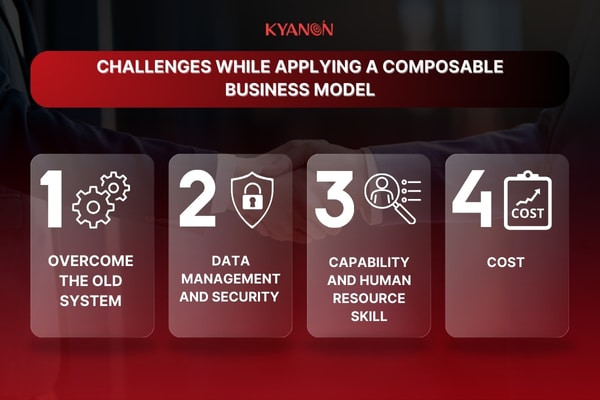
Challenges while applying a Composable Business model
5. Enterprise successfully applied Composable Business
5.1. Some of the significant example
One of the most successful and impressive enterprises with Composable Business is Spotify, a giant in the field of live music streaming. Spotify basis is erected based on the microservices architecture, allowing separate components, such as
- Suggesting system
- Broadcasting music and
- Independent charging system.
This approach has allowed Spotify to continuously innovate and roll out new features without disrupting the user experience. For example, when they introduced podcast segments, they were seamlessly integrated into the existing system without affecting the performance of music streaming services.
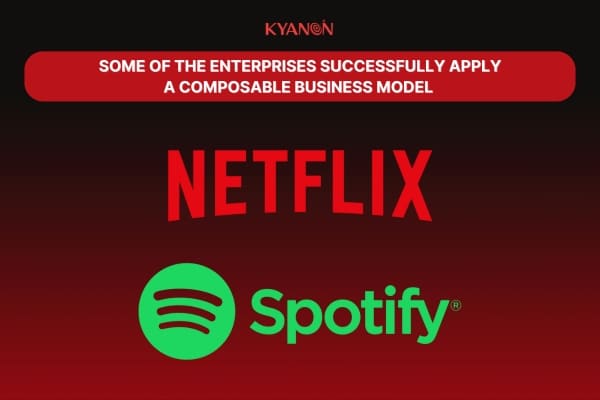
Some of the enterprises successfully apply a Composable Business model
Netflix is another significant example. By splitting the activity into the module service as:
- Producing content
- Users appearance
- And suggestion tools
Netflix can quickly adapt to the changes in favor of the user and technological progressivity.
5.2. Experience lessons
The importance of module architecture
Shopify and Netflix demonstrate that a modular architecture makes it easier for businesses to scale, update, and maintain their systems. Breaking down a system into smaller components reduces dependencies and increases adaptability to market changes.
API plays an essential role
APIs play the role of the bridge between different components in the system. Thanks to API, enterprises can integrate the service from the third party and construct new applications quickly.
Constantly testing and progressing
To succeed with the Composable Business model, enterprises should promote testing and renovating culture. This helps the developing team quickly give new products and advance the current product.
6. Tricks assisting business deploy Composable Business strategy
6.1. Define the vision
Before starting the transformation process, businesses need to clearly define their core capabilities and build modules around these capabilities.
6.2. Investing in technology
Additionally, businesses need to invest in the right technology tools and platforms, such as:
- Container management device
- Cloud basis
- Microservice tools
6.3. Building a Talented Team
The success of this business model largely depended on the human resource group. Businesses should build a team with extensive knowledge of modular architecture, software development, and related technologies.
Composable Business brings immediate benefits, such as speeding up product launches and optimizing costs, and serves as a foundation for achieving business success. Enterprises should quickly adopt this business model to seize new opportunities, overcome challenges, and maintain their position in the market.
To maximize the potential of the Composable Business model, please contact Kyanon Digital. With our rich experience team, we are ready to accompany you in building a flexible enterprise that meets your needs.

